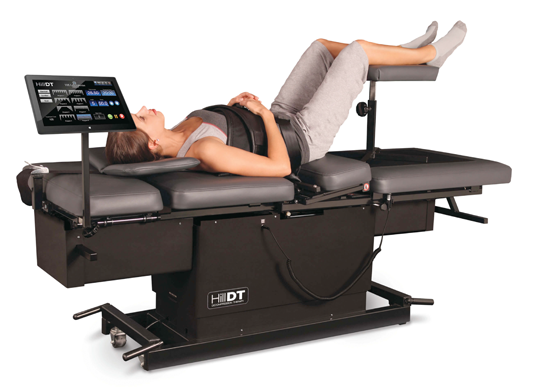You will feel a gentle pulling sensation as you are being set up and again once the program starts. You will quickly get comfortable with the sensation.
The technology in the table works with your body through a biofeedback system which stops the table if you are uncomfortable, tensing your muscles, or moving on the table. This means you will not feel any pain during your session.
Many patients tend to fall asleep during their sessions.
A small number of patients may experience temporary soreness after the first few sessions due to the changes and the healing process happening to the spine. Your session will be supervised by our clinicians/technicians.



